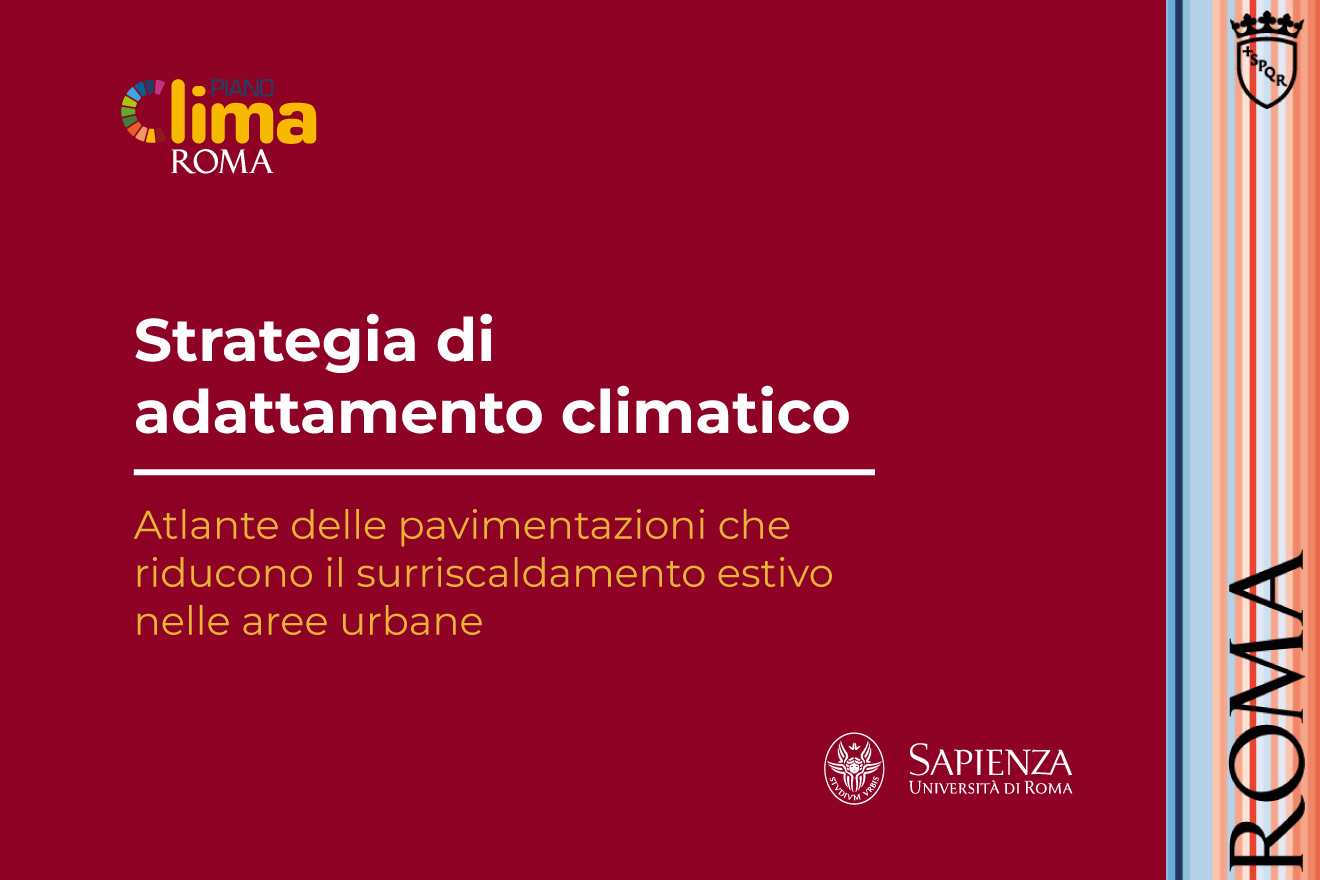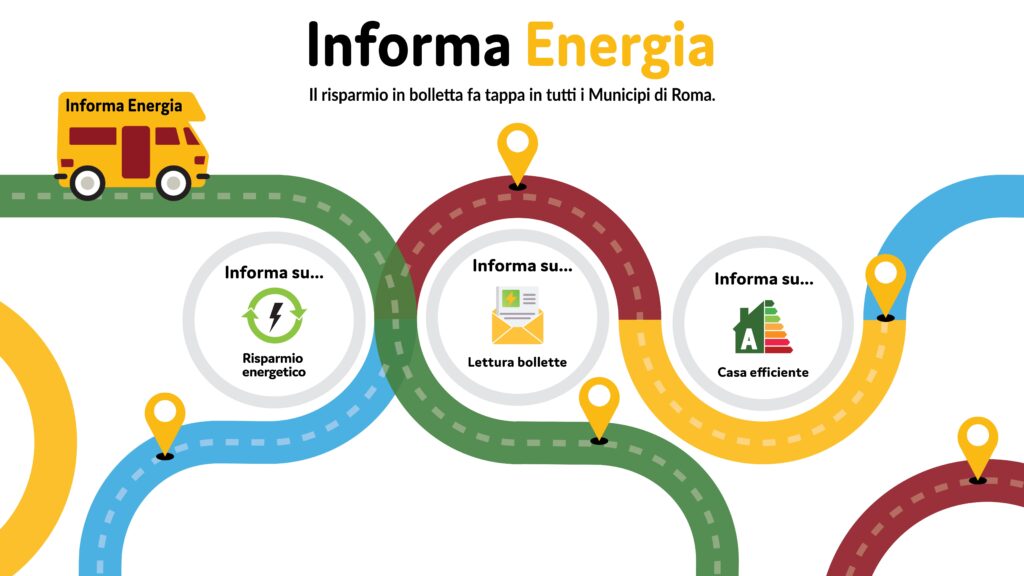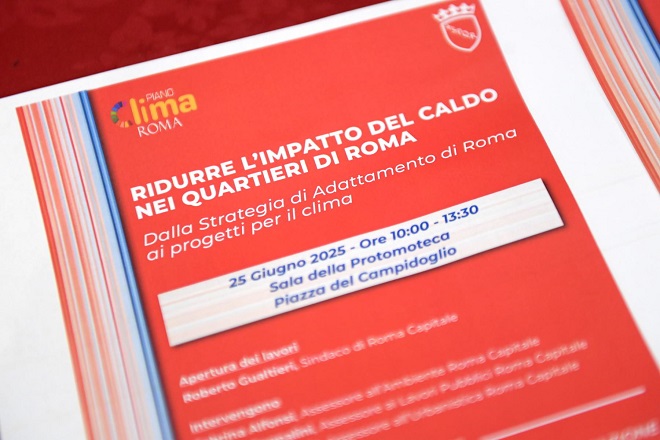Making the city more livable, safe, and welcoming even on the hottest days — this is the challenge that Roma Capitale has decided to take on using innovative climate adaptation tools. Among them, the “Atlas of Pavements that Reduce Summer Overheating in Urban Areas”, presented on October 9 at MAXXI with the scientific contribution of Sapienza University of Rome, represents a concrete step toward a more resilient Capital.
The document is part of the process launched with Rome Capital’s Climate Adaptation Strategy, which identifies among its priorities the reduction of urban heat islands and the improvement of comfort in public spaces. One of the most significant aspects in tackling overheating concerns the very surfaces we walk on every day which, depending on the materials used, can either trap heat and raise temperatures or help create cooler, more comfortable environments. Color, composition, permeability, and the ability to reflect solar radiation are all factors that directly affect people’s comfort—especially on scorching days—impacting how we experience squares, sidewalks, and streets. For this reason, Rome Capital has chosen to develop an Atlas dedicated to pavements, a technical tool designed to guide design choices and redevelopment projects with a focus on climate resilience.
The Atlas developed by Rome Capital provides useful references to help guide maintenance and regeneration efforts in a targeted way, reducing the impact of heat as perceived by citizens. The document includes technical sheets featuring performance data, references to Minimum Environmental Criteria (CAM), examples of practical applications, and assessments of how materials behave in relation to heat. These are practical tools designed for planners, contracting authorities, and companies, with the goal of ensuring the best possible microclimatic comfort.
What makes it particularly valuable is that today, thanks to indicators such as the Solar Reflectance Index (SRI) and simulation tools, it is possible to estimate the effect of different pavements on people’s well-being and to integrate these data into urban regeneration projects. The Atlas thus becomes a technical reference to guide tenders, specifications, and design choices, promoting more sustainable and effective solutions.
The Atlas is not an endpoint but a dynamic tool meant to evolve over time with new data sheets, materials, and solutions. It also opens a dialogue with companies, professional associations, universities, and citizens to foster innovation and raise awareness of climate adaptation in both public and private projects.
According to Public Works Councillor Ornella Segnalini:
“The Atlas is a concrete tool to transform the way we design and experience public spaces. Pavements are not just a technical detail—they make the difference between scorching surfaces and welcoming squares. This approach is already visible in the Jubilee construction sites and in projects from Piazza Pia to Piazza San Giovanni, from the Planetarium and the Dogali Gardens to Piazzale di Porta Pia and the new sidewalks along Viale Mazzini, where replacing asphalt, planting trees, providing shade, and choosing the right materials all help reduce perceived heat. The Atlas complements the Public Works Guidelines to ensure these criteria become shared practice in all future projects.”
Edoardo Zanchini, Head of the Climate Office, added:
“The Pavement Atlas is a key step because, together with the Public Works Guidelines, it gives Rome a technical framework that integrates scientific knowledge, minimum environmental criteria, and real-world applications. It’s a tool born from the collaboration between Rome Capital and Sapienza University, enriched by the contribution of the Department of Public Works, and it will enable offices, municipalities, and companies to transparently and measurably select the most suitable materials to reduce urban heat. The sheets compile performance data, real examples, and simulation tools that allow us to assess the impact of different solutions on people’s well-being. In this way, we can turn research into on-site practices and guide all future urban regeneration projects toward sustainability, resilience, and high-quality public spaces.”





